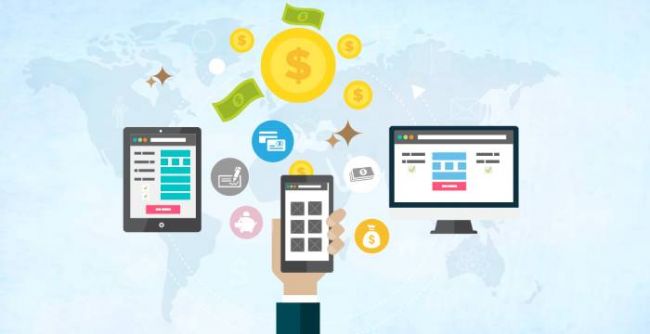Technology
6 min read
Transforming Transactions: The Shift to Alternative Payment Methods


The rise of alternative payment methods in e-commerce transforms how you shop online. With options like mobile banking apps and digital wallets gaining traction, consumers are now looking for seamless and secure ways to complete transactions. This shift not only enhances convenience but also addresses concerns around security and fraud.
In this article, you'll discover the various alternative payment methods reshaping the e-commerce landscape. From understanding the mechanics of mobile payments to exploring the benefits of services like auto debit and bank transfers, you'll gain insights into how these innovations are making online shopping easier and more accessible for everyone. Get ready to explore the future of payments in the digital marketplace.

Alternative payment methods play a significant role in e-commerce by diversifying how consumers complete transactions. These methods offer flexibility and cater to various preferences, enhancing the overall shopping experience.
Alternative payment methods encompass various nontraditional options for making online purchases. This category includes mobile payments, bank transfers, e-wallets, and auto-debit services. Supporting these channels, Antom helps ensure transactions are completed through user-friendly systems that prioritize both security and convenience.
And as noted in research on consumer behavior with digital payment apps , user trust and simplicity are central to adoption.
Alternative payment methods (APMs) gain traction through various factors that align with consumer preferences and merchant capabilities.
Consumers favor speed and simplicity in transactions. Digital wallets and mobile payments cater to this demand.
Embedded payment options streamline the checkout process. These features minimize friction and significantly increase conversion rates.
Enhanced security protocols attract privacy-conscious users. APMs that utilize blockchain technology effectively minimize the risk of fraud.
Regulations supporting open banking and real-time payments promote the integration of APMs. These frameworks create a more inclusive payment ecosystem.
Offering diverse payment options increases customer satisfaction. Tailoring choices to varied preferences reduces cart abandonment and enhances trust.
Data-driven insights also play a big role here. As Forbes highlights, transaction analytics help merchants personalize experiences while ensuring safer, faster, and smarter payments.
Alternative payment methods (APMs) play a significant role in enhancing the e-commerce experience. Here are the key categories driving this trend:
As of 2023, digital wallets represent over 30% of global point-of-sale transactions. About 70% of online adults in the U.S. accessed mobile payments within the last three months.
The BNPL sector reached a valuation of $39.65 billion in 2024 and anticipates a 30.5% annual growth rate until 2033. This method enjoys popularity in North America, significantly impacting digital commerce.
Emerging account-to-account and real-time payment methods contribute to evolving consumer expectations. These options provide immediate transaction confirmation, enhancing overall efficiency.
Open banking enables direct bank-to-bank transactions, ensuring secure payments. This method simplifies the customer journey and reduces reliance on traditional credit systems.
QR codes facilitate quick payments, especially in Asian markets. Super-app solutions streamline transactions across various services, enhancing users' convenience.
Though ownership of cryptocurrencies has risen, payment usage remains low due to regulatory hurdles. Stablecoins offer potential for secure transactions, but adoption faces numerous challenges.
Tools like Ezzocard virtual prepaid cards provide secure, anonymous ways to transact online, appealing to privacy-conscious users.
Alternative payment methods are gaining traction across various regions, each shaping the e-commerce landscape uniquely.
| Region | Key Trends |
|---|---|
| North America | Digital wallets dominate, with consumers favoring speed and security. BNPL options are becoming increasingly popular and providing flexibility. Credit and debit card use hinges on digital wallet integration, streamlining transactions. |
| Europe | Europe is characterized by diverse payment preferences and strong digital wallet adoption. Regulatory initiatives support real-time bank transfers, enhancing the checkout experience. BNPL solutions also experience significant growth, reflecting changing consumer expectations. |
| Asia-Pacific | Digital wallets prevail, influenced by high smartphone penetration. Mobile payment solutions are crucial for consumer transactions. Cash on delivery still holds relevance in some areas. BNPL and real-time payment systems are expanding across Southeast Asia and India. |
| Latin America | Cash-based methods persist, though digital transformation is evident. Brazil and Mexico have led the way in adopting mobile payment apps and digital wallets. Cross-border e-commerce promotes the need for diverse payment solutions, including prepaid cards. |
| Middle East & Africa | Mobile money platforms drive e-commerce growth, addressing low card penetration. Services enable cashless transactions and financial inclusion. The rise of BNPL and real-time payments aligns with increased internet access and smartphone usage. |
Alternative payment methods bring several challenges and risks that can impact consumers and businesses. Understanding these aspects is crucial for successful implementation.
Fraud risk increases as alternative payment methods gain popularity. Cybercriminals target these systems, exploiting vulnerabilities. Regular security audits and updating protocols are necessary to protect sensitive information and maintain user trust.
Compliance with regulations presents hurdles. Different jurisdictions impose varying standards, increasing merchants' complexity. Businesses must invest in legal expertise and systems to meet these diverse requirements, which impacts operational costs.
Integrating multiple payment systems can be costly and technically challenging. Merchants face difficulties creating seamless transactions across platforms, and developing compatible solutions requires significant investment in technology and infrastructure.
Building consumer trust remains vital for widespread adoption. Concerns about the security of new payment methods can deter users. Transparent communication about security measures and fraud protection fosters confidence and encourages usage.
Understanding your market and consumers enhances payment method adoption.
Alternative payment methods reshape e-commerce, making transactions faster and more secure. Digital wallets enable quick checkouts, while Buy-Now, Pay-Later options increase purchase flexibility.
A range of payment types appeals to diverse customer preferences. Integrating various payment systems can streamline operations, benefiting your business.
Many consumers prefer digital solutions, reducing friction during the buying process. Adopting these methods can increase conversion rates and reduce cart abandonment.
Keeping current with payment trends allows businesses to enhance customer trust and satisfaction. Regular assessment of payment options and consumer trends supports ongoing growth in an evolving marketplace.
Be the first to post comment!